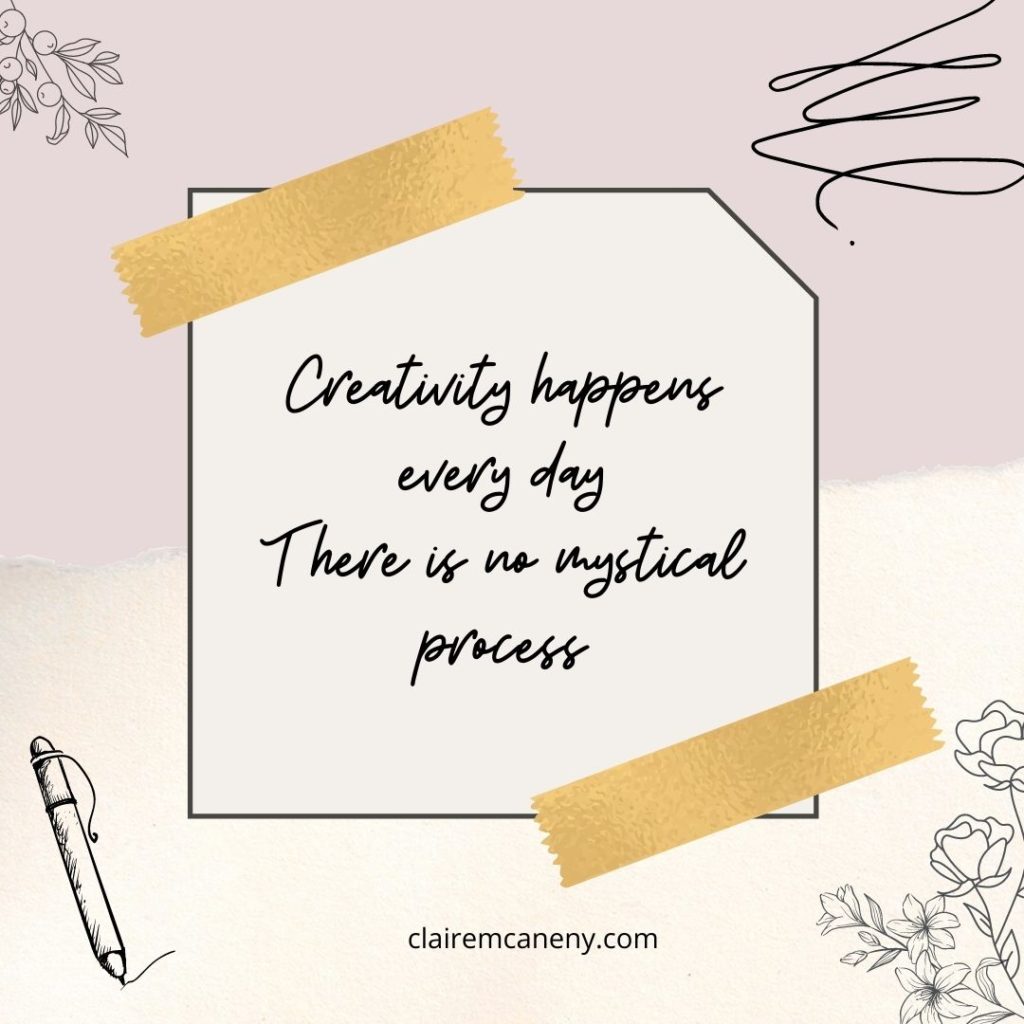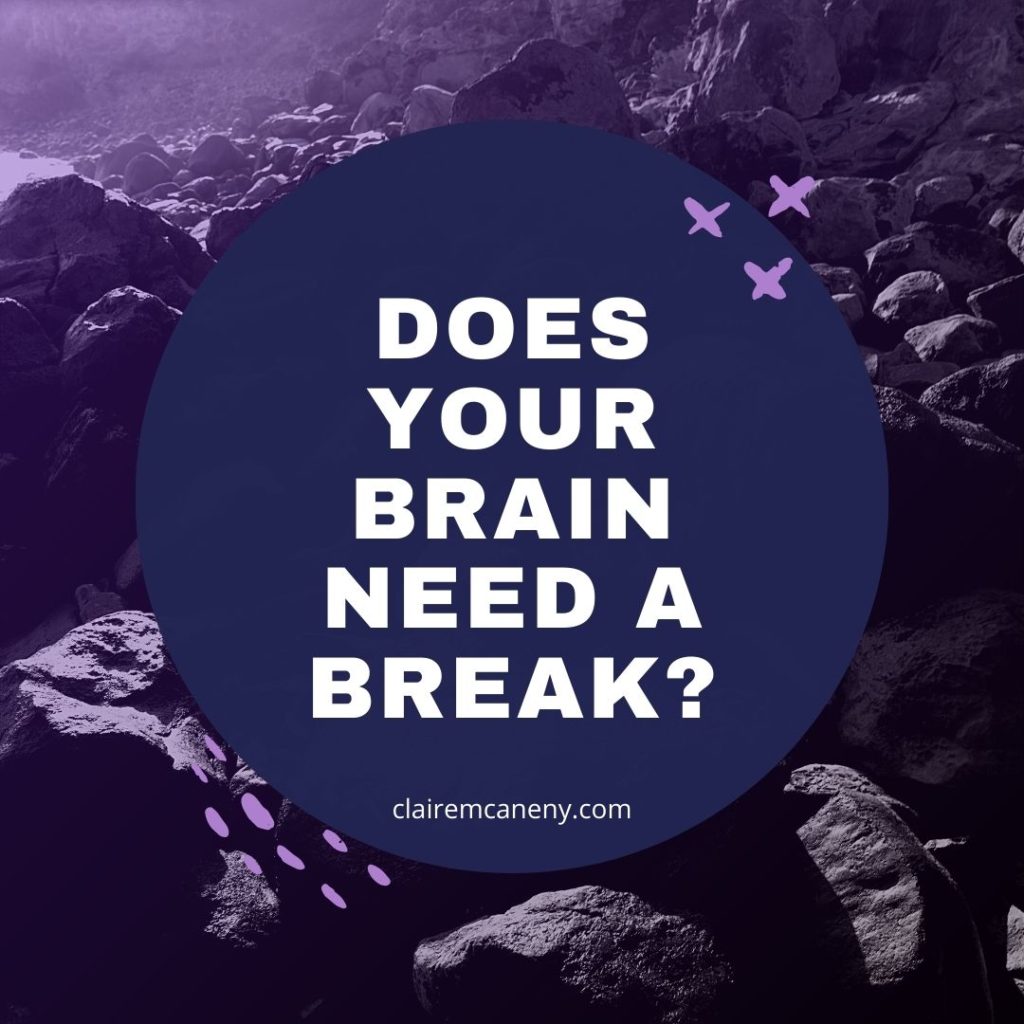What Everyone Needs to Know about Creativity

Some successful creatives – artists, authors, etc. make creativity sound like some magical, mystical event that only a lucky few are even able to experience, never mind interpreting what the muse tells them.
I think creativity is more accessible than that. And it is a bigger part of our lives than many people presume. I want to demystify creativity so that it does not become a mental block that stops you from writing.
Everyday Creativity
Psychology Today includes the ‘daily acts of ingenuity and novel workarounds’ in their definition of creativity. Some of these everyday types of creativity could be:
Selecting a paint colour for the wall of a house.
Choosing which herbs to use with which meat or ingredients to put into a soup (this is not my area of interest).
Deciding which funny story to share with a friend.
Choosing which route to use for the day’s run.
Selecting a game to play with any age child.
Choosing to dance in the kitchen.
Picking which clothes to wear together with which pair of shoes.
It was only last summer that I really started to understand how many different areas of my life I could be creative in (still not cooking though). I spent the summer doing the Konmarie method of decluttering and I really enjoyed the part of the process where you arrange your items in drawers using boxes and containers. Like, I really enjoyed it. And those days were some of my best writing sessions. I would declutter in the day and then that evening after my children were in bed I would write. For ages and get a lot done. I don’t always track word count but I was getting short stories finished and achieving writing goals.
There are other ways that creativity shows up. If you are not happy with the storyline for a particular character in a series, programme or even how your youtuber of choice has structured their minecraft video you are thinking creatively. If you were ever unhappy with how a film ended and thought of a better ending. Even if it was just that it should have ended sooner.
All of these are examples of creativity. There are definitely more. I have not covered every single type of creativity here.
What stifles creativity?
There are times when we are more creative than others. Stress and worry are not conducive to creativity. This is a great article on how the stresses of our everyday life can affect our ability to think creatively. Even worrying about being creative will definitely kill creativity. This self doubt is useful during the editing stage but not the creating stage.
You have to work at your mindset to help you get started. If you are worrying before the pen even touches the page (or your fingers touch the keyboard etc.) then it will be even harder to feel creative. And feeling creative is still not a guarantee that you will be creative but it gets you closer to it. I wrote more on mindset here in this blog post.
My creative experience as a child compared to an adult
I was very good at daydreaming when I was younger. I did not like school so I used to let my brain wander and imagine many different scenarios. When I was in secondary school and we had free classes I usually ended up writing whatever idea I had in my head that day. And I still have all of those half started story ideas – which is why I needed Marie Kondo’s system of decluttering.
So, I thought I was fairly good at being creative. But when I was doing my creative writing modules as part of my degree as well as working full time and with a baby that did not need to sleep I really struggled. I got through it, but it was not as easy as it had been before.

Benefits of mindless activities for Creativity
I can see now that my stress levels were high. But I was also not creating time for rest. Our brains, similar to our bodies, need rest periods. They need a break from processing information which is why scrolling through social media does not count as a rest. Mindless activities, such as sitting still and staring into the distance, which is what I was doing in class, are the ideal break for our brains.
Sleep is a part of this but so is time off. As creatives we should choose activities that feed our brains ideas. Reading books, stories, watching films all funnel ideas into our brains to be used later. Julia Cameron, author of The Artist’s Way, calls this an artist date. She recommends intentionally taking time to do activities that feed our creativity. She also calls it filling the well of creativity.
Continually putting pressure on our brains to become a machine that churns out ideas usually backfires. But just be careful which activities you are choosing to give your brain time off. Scrolling through social media might not work if you end up looking at a lot of successful writers and feel like you are never going to get there. Time off for the brain should make you feel better, energised and enthusiastic about getting back to writing again.
Activities that give my brain a break
Being surrounded by nature works for a lot of people. For me, working in my garden always helps. The combination of being busy with my hands and doing activities that produce fast results – weeding around plants, planting new plants – always sets off that part of my brain that works best when I’m not paying attention to it.
In school, I was always able to listen to the teacher and daydream at the same time. I was never caught out when I was called on. I always knew exactly where we were on the page when I was asked to read. So, now as an adult I pick activities that need more than one part of my brain to focus on. In my writing space I am surrounded by full book shelves and images and words stuck on the walls because I don’t work well in a blank space. Knowing how you work helps. If you are not sure then experiment with different options. I wrote about setting up a productive work space in this blog here.
I also need music while I’m writing as I cannot write for very long in quiet spaces. It’s like the voice in my brain gets too loud and my inner critic, or bored child, sometimes both, gets in the way of the words that I am trying to write. The music either drowns them out or keeps them busy.
So, now I hope you are able to see how creativity is possible. It is not some mystical process only accessible by a few chosen people.

The next step now is to find out when you are at your most creative.
Action Steps
Write these down so that when you are stressed about being creative you can go read back over it and then work towards stimulating your creativity again.
0 Comments on “What Everyone Needs to Know about Creativity”